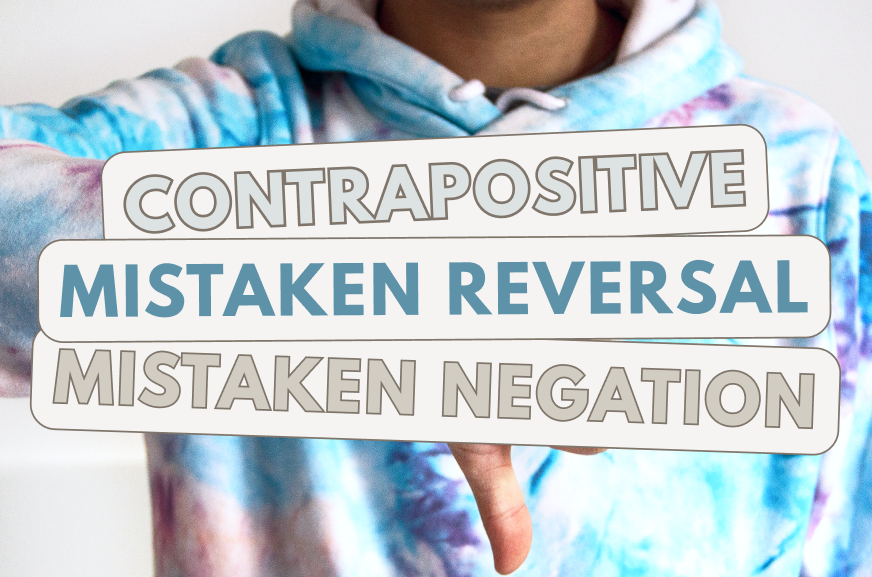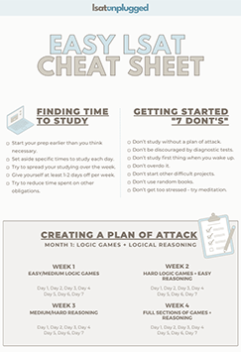What is the contrapositive? What do mistaken reversal (converse) and mistaken negation (converse) look like on the LSAT?
While each bite-sized Logical Reasoning argument and each Logic Games rule may seem impossible to understand, they’re pretty manageable once you’ve got a grip on the basics.
In this article, I’ll share the basics of conditional reasoning with you.
Original statement:
If I tutor the LSAT in Manhattan, then I tutor the LSAT in New York City.
Symbolized:
Manhattan -> NYC
Mistaken reversal / converse (invalid):
If I tutor the LSAT in New York City, then I tutor the LSAT in Manhattan.
Symbolized:
NYC -> Manhattan
False because this statement implies that I tutor in a different part of NYC (Brooklyn, Queens, Staten Island, or the Bronx).
Mistaken negation / inverse (invalid):
If I do not tutor the LSAT in Manhattan, then I do not tutor the LSAT in New York City.
Symbolized:
Manhattan -> NYC
Again, this statement is false because I could be in another borough of NYC.
Contrapositive (valid):
If I do not tutor the LSAT in New York City, then I do not tutor the LSAT in Manhattan.
Symbolized:
NYC -> Manhattan
This is true. It’s impossible for me to tutor the LSAT in Manhattan if don’t tutor the LSAT in NYC because Manhattan is in NYC.
It’s worth noting the mistaken reversal and mistaken negation are the contrapositives OF EACH OTHER. They are logically equivalent. Why? Because they’re flawed for the same reason – they confuse necessary and sufficient conditions.
The sufficient condition:
-appears to the left of the arrow in the “symbolized” sections above
-is often indicated by the words “if” and “when”
-is enough to cause the necessary condition to follow, but it’s not necessarily required for the necessary condition to occur
-serves as the evidence
The necessary condition:
-appears to the right of the arrow in the “symbolized” sections above
-is often indicated by the words “then” and “must”
-often appears after a comma
-is required by the sufficient condition
-serves as the conclusion
Why this is important:
Breaking down which parts of the argument are sufficient and necessary allows you to determine the evidence and conclusion. This helps you figure out potential flaws and opportunities to strengthen/weaken the argument.
Further reading:
Wikipedia’s article on the contrapositive is solid.

